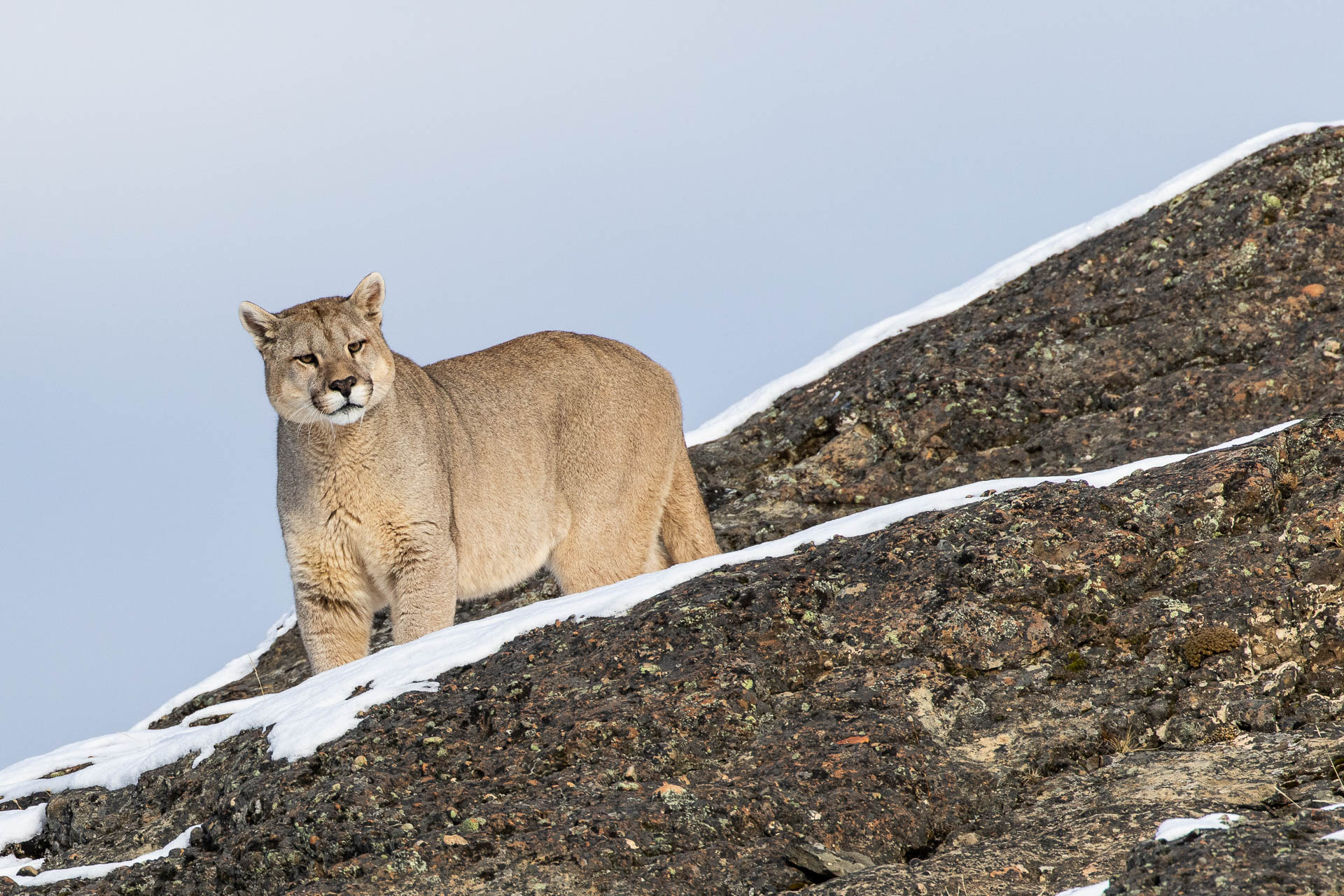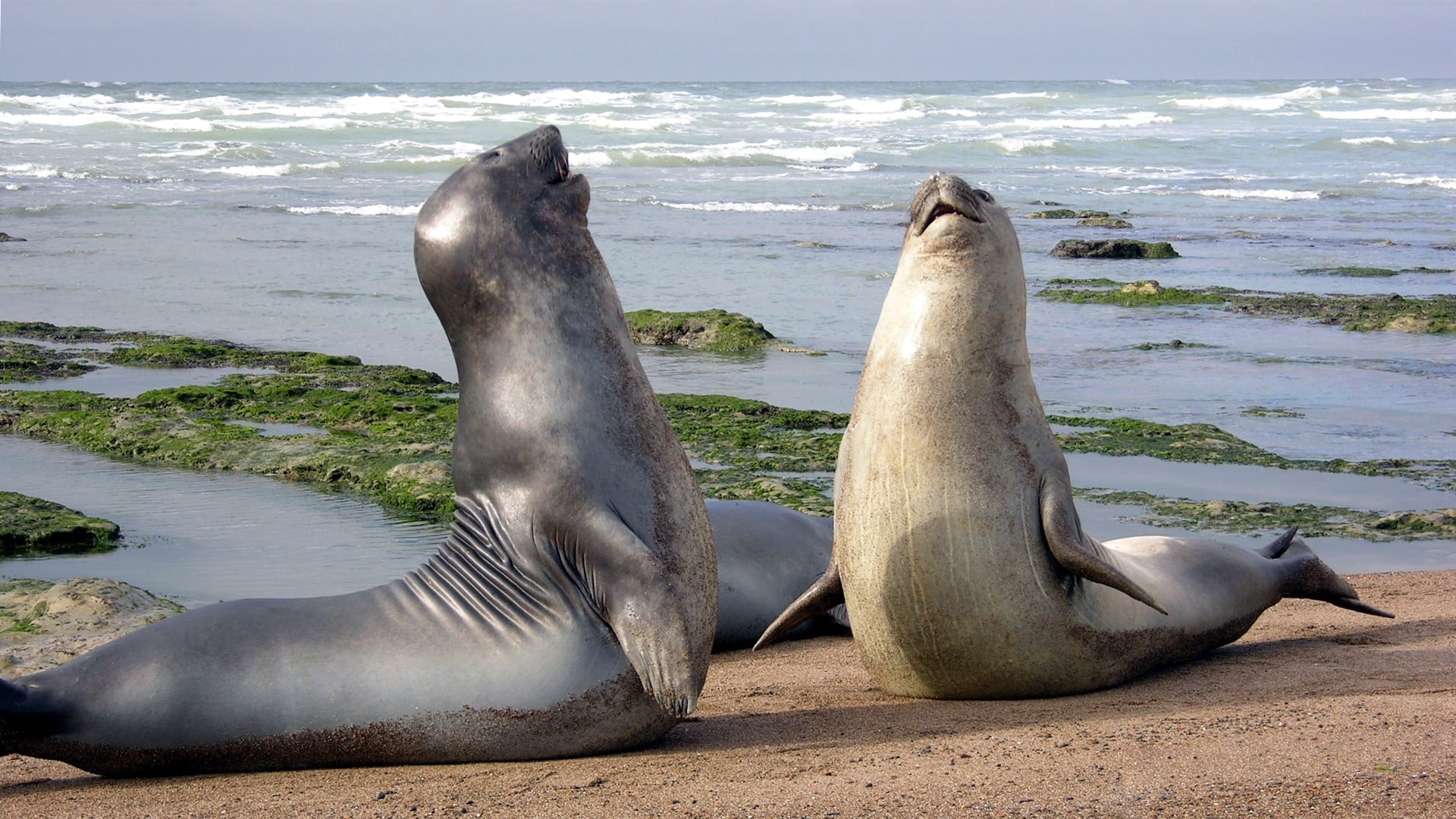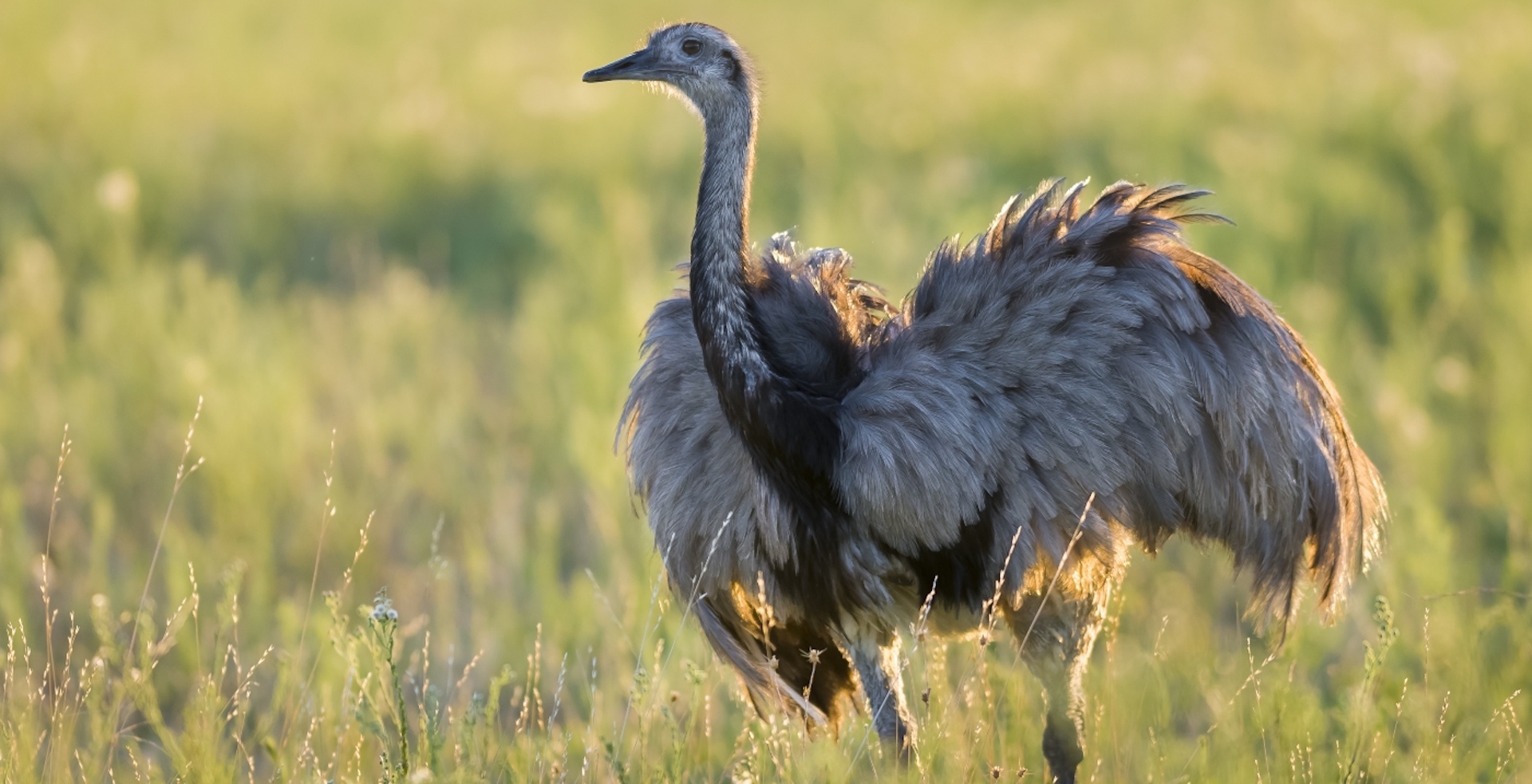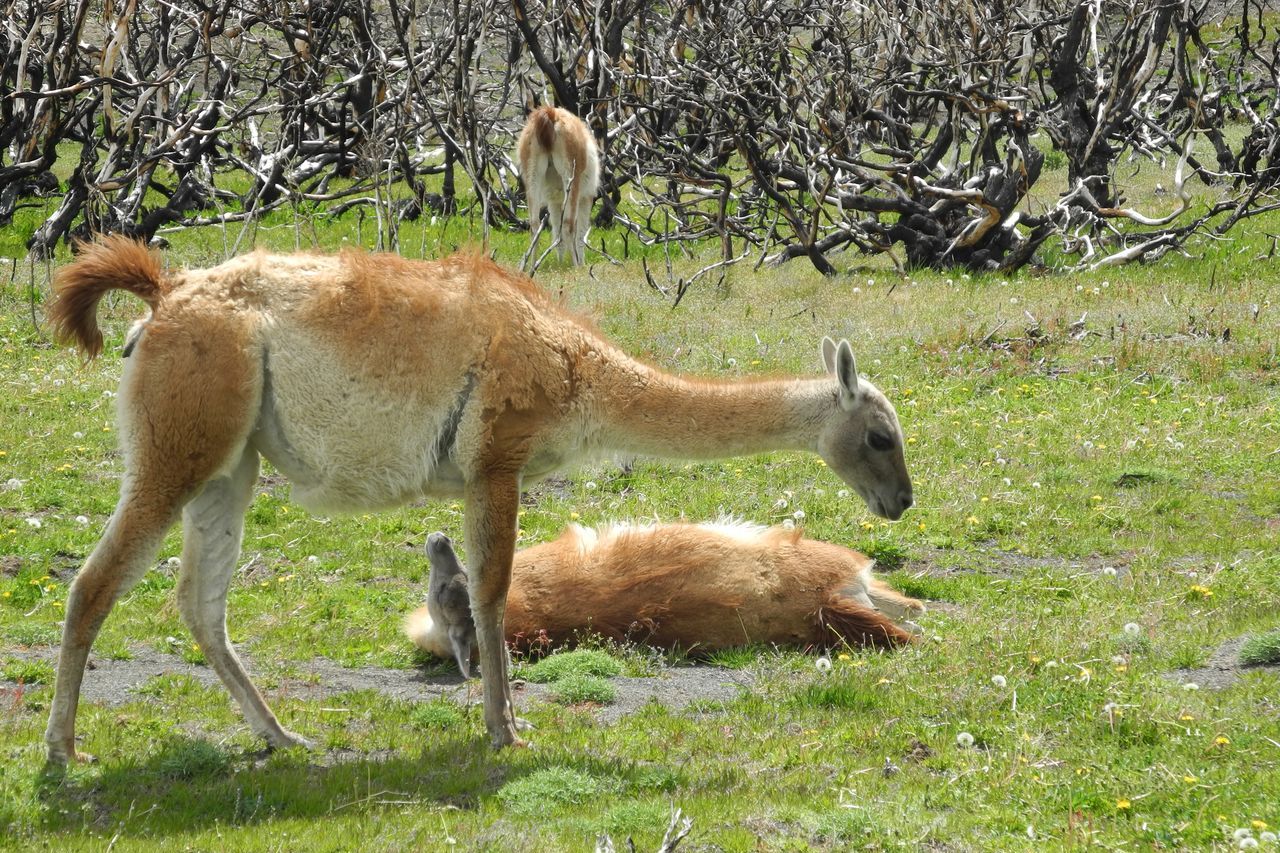Do you know Patagonia? Do you know where it is? First we will tell you that it is to the south of the American continent, very close to the Antarctic, and the most interesting thing is that many animals live there. Do you want to know what the Animals of Patagonia are? We invite you to read this article.

Patagonian Animals
Patagonia is a geographical area that is located at the southernmost point of South America, shared by Argentina and Chile. However, the Patagonian word has more meanings than referring to a region that is between those two countries. It is also used as a way to identify a culture and a history of the peoples who live in what has also been called the southern territory.
These towns are intensely influenced by the mixture of an ancestral heritage of the native populations, with the daily gaucho or Creole culture, and the influx of European immigration, such as German, English, Welsh, Spanish and many other nationals.
To this interconnection of cultures, it must be added that Patagonia also amazes for its unsurpassed natural beauty that enjoys a chosen and peculiar biodiversity. Their territories cover areas that include the Atlantic and Pacific oceans, passing through the Andes Mountains and in those places there are multiple species that live in Patagonian ecosystems. That is why the animals of Patagonia are very interesting.
In this article we are going to comment on some of the animals of Patagonia, so extraordinary and beautiful that they attract tourists and scientists from all over the planet due to their very particular characteristics.
Animals of the Chilean and Argentine Patagonia
In general, it is customary to separate Patagonia into two large areas or regions, which are the littoral or coastal area, which is on the side of the Atlantic Ocean and belongs to Argentine territory, but also by the Pacific Ocean, and in this case it is part of the Chilean territory. The second area is the so-called continental or Andean-Patagonian zone, which is where the most central areas are located, which have essentially desert climates, up to the Andes Mountains, where humid forests and glaciers predominate.
Just as there are great differences in the landscape, it is also possible to observe the existence of a biodiversity that is characterized by its differences in the different areas. In what is called the coastal zone, there is a clear pre-eminence of species of fish, birds and aquatic mammals, but in the area called continental, the presence of terrestrial mammals and species that have been able to adapt to the masses of fresh water, essentially lagoons and lakes.
As in the two areas, it is possible to find several areas that have similar microclimates and environmental conditions both in the territory of Chilean Patagonia and in the territory of Argentine Patagonia, so multiple species of living beings can be found that live in both. countries. For this reason, we are going to start this section of the article by showing you the animals of Chilean and Argentine Patagonia that can be classified as having a common origin.
Guanaco
The guanaco (Lama guanicoe) is one of the most representative living beings in Patagonia, which is popularly known as the Patagonian llama. It is a herbivorous mammal that is native to South America and is part of the camelid family, in the same way as llamas, vicuñas and alpacas. Although it is true that its population is scattered throughout the Andes Mountains, its largest population is located in the Patagonia region.
From the investigations carried out, it has been estimated that almost 95% of the world population of guanacos is located in Argentina, having a very extensive habitat that runs from the Puna, which is located in the extreme north of the country, to Tierra del Fuego, which It is the southernmost province of Patagonia.
In Chilean Patagonia, the number of guanacos has suffered a fearsome reduction of up to 75% in recent times, in particular due to hunting activities. Currently, it is one of the country's protected species, and in Chilean Patagonia, guanacos can be observed essentially in the Torres del Paine National Park, which is located in the Magallanes division.
Magellanic Penguin
Penguins are the most famous flightless birds on the planet and in the Patagonian region, some species of penguins can be seen, particularly during migration times. However, one of the most recognized living beings in Argentine and Chilean Patagonia is, without us doubting it for a moment, the Magellanic penguin (Spheniscus magellanicus), which is also called the Patagonian penguin.
Each year, during the corresponding season, the Magellanic penguins move to the coast of the Patagonian area to make their nests together with their partners, since they are essentially monogamous. In Chile, one of the largest colonies in the world can be found in the Los Pingüinos Natural Monument, which is located in the Isla Magdalena National Park. It is thought that more than 70.000 pairs of this species make their nests in this reserve that is located in the Strait of Magellan.
Already in Argentine Patagonia, the Magellanic penguins have the habit of making their nests on the coasts of the provinces of Chubut and Santa Cruz, and very large colonies can be seen in the Valdés Peninsula, Punta Tombo and Puerto Deseado. Puntas Tombo prevails for being the largest and most studied continental stopover place for penguins on the entire planet.
dolphins
In Chile and Argentina, it is normal for the different species of dolphins that live essentially in the cold waters of Patagonia to be called tonina. But the species of dolphins that are most common in Argentine and Chilean Patagonia are the southern dolphins and the dusky dolphins.
Dusky dolphins, also known as Fitzroy's dolphins (Lagenorhynchus obscurus), are smaller than other species of odontocete cetaceans. However, there is a huge variety of sizes among individuals of this same species. In Chile, it is possible to observe the largest individuals in Patagonia, which can measure up to 2 meters in total length. While in the Argentine Patagonia, individuals of smaller Fitzroy's dolphins can be observed, which can reach a length of 1.7 meters in length.
Although it is not possible to have obtained precise information on the number of individuals that make up its population throughout the world, it was possible to carry out an exhaustive sighting work in the Patagonian region in the 90s, from which it has been possible to calculate that around of 7.000 specimens have their habitat in the southernmost waters of the American continent.
The southern dolphins (Lagenorhynchus australis), which also receive the name of Antarctic dolphins, as their name indicates, are living beings endemic to southern Patagonia, having their habitat, essentially, in the cold waters that are located between Tierra del Fire and Antarctica. In general, they can grow to about 2 meters in length and resemble dusky dolphins, but their faces are dark gray, while dusky dolphins' faces are mostly white.
Patagonian Skunk
The Patagonian skunk (Conepatus humboldtii), whose popular name is the Patagonian skunk, is a small mammal that is part of the mephitidae family, which lives mainly in the southern section of the Patagonia region.
These skunks are small animals whose diet is carnivorous, but they are opportunistic animals that have nocturnal habits. Its diet is based on the consumption of bird eggs and other small mammals that it can hunt with particular ease, because they have an unparalleled sense of smell. Likewise, they are capable of catching insects and worms with which they supplement their diet, particularly in the winter, when food is more difficult to find.
Darwin's Rhea
The rhea (Rhea) are birds that do not fly either, which have an appearance that makes them similar to ostriches, but their size is smaller and they are endemic to South America. Today, thanks to the studies that have been carried out, the existence of two species of rheas is recognized:
- Common or American rheas (Rhea americana), which are those that live in an area that ranges from central Brazil to northern Argentina and eastern Paraguay.
- Darwin's rheas or petisos (Rhea pennata), whose habitat is found particularly in the steppe regions of Chilean and Argentine Patagonia.
Short-tailed rheas are relatively small, reaching a height of around 90 cm. They draw attention to the speed at which they are capable of running, being able to reach speeds of up to 60 kilometers per hour. In the Patagonian area these animals have several names, which are choice, Patagonian rheas, suri and Andean rheas.
Unfortunately, the population of these birds has been drastically reduced in recent times, and today the short-toed rheas are one of the living beings in Patagonia that are at risk of extinction, mainly due to hunting activities.
Puma
The cougar (Puma concolor), is commonly known as the lion of America, it is one of the great predators that inhabit the American continent. Today, the existence of six subspecies of this great feline is recognized and five of them have their habitat in South America. The only subspecies that lives in North America is Puma concolor couguar, whose population is scattered from Canada to northern Nicaragua.
Among the living beings that inhabit Patagonia, there is the southern South American puma (Puma concolor puma or Puma concolor patagonica), whose characteristic is that it is the South American subspecies that is the one that has best adapted to cold climates. In Chile, these animals live in a region that extends from the central area to the Strait of Magellan, with a special concentration in the Torres del Paine National Park.
If we look at Argentina, its habitat is found from the Center-West to South Patagonia. In both countries, the number of individuals of these animals has been reduced in a very alarming way, because they have been heavily hunted, and they are considered a threatened or endangered species, depending on the region to which we are referring. .
Animals of Argentine Patagonia
We have already explained about the animals that live both in Chilean Patagonia and in Argentine Patagonia, but in this section we are going to refer to the animals of Patagonia that are mainly found in Argentine territory.
Of course, this does not mean that it is possible that they are also seen in the territories of Chilean Patagonia, but rather that they are animals whose permanence is more frequently associated with the ecosystems and culture of Argentina. Let's see below some curiosities about these species of Argentine Patagonia.
Patagonian Mara
The mara (Dolichotis patagonum), also called the Patagonian hare, is a large rodent species that is considered endemic to Argentina, even so, they can also be seen in the extreme south of Chile. Despite its popular name, the mara is not part of the family of hares and rabbits (Lagomorpha), but is classified within the order Rodentia, in which rats, squirrels, and capybaras are also found.
Maras are especially known for being the largest rodents in the world, which can have a body that weighs between 8 and 15 kilos. In addition, another characteristic that draws the attention of these animals is that their behavior is monogamous and they are faithful animals to their partners, which is strange in this class of animals, since most rodents have the habit of mating with different individuals during the reproductive seasons.
https://www.youtube.com/watch?v=kQAQL0GfAoE
southern right whale
The southern right whale (Eubalaena australis) has the habit of arriving annually at the Valdés Peninsula, in the middle of the winter season, in order to be able to mate when the spring season arrives. And along with them, thousands of tourists and researchers arrive at this very relevant nature reserve located on the coast of the Argentine province of Chubut, whose sole purpose is to spot these whales in person, either from the coast or on boats.
Sea lions
The orography of the Atlantic coast of Patagonia in Argentina seems to be the perfect area for the life class of South American sea lions (Otaria flavescens). These bulky aquatic mammals take advantage of the rock formations and beaches below the cliffs, which are so emblematic of the Patagonian coast, to take their breaks while sunbathing, but also with the convenience of being able to quickly dive in. in the water to swim, hunt or escape from their main natural predator, which are killer whales.
Although it is true that these animals can be observed along almost the entire Argentine Atlantic coast and in several areas that are bathed by the Pacific Ocean in Chile and Peru, their largest and most studied population is found in the coastal areas of the provinces. Argentines of Chubut, mainly in the Valdés Peninsula.
Animals of Chilean Patagonia
In this section of the article, we are going to dedicate ourselves to explaining some Patagonian species that predominantly inhabit the Chilean territory. Once again, we must warn that this does not mean that populations of them cannot also be found in Argentine territory, but rather that they are animals that are more associated with the culture and ecosystems of Chile.
darwin's fox
Darwin's fox (Lycalopex fulvipes), is a species of canid that is considered endemic to southern Chile, where it is also absolutely known as the Chilote fox. It is a type of small fox, which has a height at the withers of around 25 centimeters and can have a body weight that can be between 2.5 and 4 kilos. Its fur tends to be dark gray or black, with some reddish spots on the legs and ears, which causes it to be confused with the gray or shrieking fox.
Unfortunately, this beautiful animal is considered today as one of the animals of the southern continent that are in greatest danger of extinction, being located on the IUCN Red List and for Greenpeace. Currently, their population is practically limited to Chiloé Island and the Nahuelbuta Mountain Range, but they can also be found more sporadically in some National Parks in Chilean Patagonia.
huemul
The huemul (Hippocamelus bisulcus) is such an esteemed animal in Chile that it is considered one of the patriotic symbols of that country, and is part of its national coat of arms. It is a species of deer that is native to the Andean regions of the Southern Cone of South America, its main natural habitat being the forests of Chilean and Argentine Patagonia. It is also a very relevant animal in Argentina, having been declared a national monument in the 90s.
Currently, the huemul is one of the living beings in Patagonia that is at risk of extinction, because it has been hunted indiscriminately for more than a century. Research indicates that less than 2.000 huemules prevail in the Patagonia area, and that their population has been reduced by half in the last 500 years. In Chile, its hunting, possession, capture and commercialization are prohibited by Law 19.473, which is why it is one of the most protected animal species in the country.
Pudu
Pudus (Pudu) are animals that make up a genus of small cervids, they are native to the Andean regions of South America. At present, the existence of two species of pudúes has been recognized:
- Northern Pudú (Pudu mephistophiles), which is the species that lives essentially in the northern part of South America, between Peru, Venezuela, Ecuador and Colombia.
- Southern Pudú (Pudu puda), which only lives in the Andean forest regions of central-southern Chile and western Argentina.
Certainly, it is not one of the most famous animals inhabiting Patagonia, but we must consider that the pudú stands out for being the smallest cervid known today. It seems that its population is only abundant in the Chiloé archipelago, which is an extension of the lake region in Chilean Patagonia.
But the pudús can also be found in Chile, in the extensions that are found in the Regions of Araucanía and Aysen. In Argentina, the largest number of individuals is found in Parque Nacional Lanin, which is located in the province of Neuquén.
Animals of Patagonia in extinction
In this section we want to emphasize that some of the animals that we have talked about in this article are in danger of extinction according to the IUCN Red List, so measures must be taken for their conservation and that of their habitat. Those animals are:
- Guanaco
- Magellanic Penguin
- Fitzroy's Dolphins
- southern dolphins
- Patagonian Skunk
- common rheas
- Darwin's Rheas
- Puma
- Patagonian Mara
- southern right whale
- Sea lions
- darwin's fox
- huemul
- Northern Pudu
- South Pudu
Patagonian fish
Like species of animals and birds, in Patagonia there are many species of fish, but in this case it cannot be determined that they belong to the Chilean section or to the Argentine section, rather they are considered common species.
In addition, saltwater and freshwater fish can be found. In the case of freshwater species, they are found in lakes and rivers, in particular, several species of salmonids such as brown trout, rainbow trout, landlocked salmon or silver trout, famous for their large size.
Among the most common freshwater fish in Patagonia, we find the following:
Trout Fontinalis
It is a fish that has a white border that later becomes a black stripe towards the fins. It is one of the pieces that are most appreciated by sport fishermen from all over the planet. It is a smaller salmonid, but its beauty, voracity and quality of meat make it highly esteemed for this species, which also has red spots on its flanks surrounded by a light blue line. It prefers cold waters that are highly oxygenated.
brown trout
It is always the hardest stamp to get in the salmonid album, it is also the largest, and for that reason, it is the most sought after. Their habitat is in inaccessible areas, and when you manage to get to them, it turns out that it is not easy to fool them. It has black spots that are surrounded by a clear line, which differentiates them from other trout. Young individuals have a reddish or orange fin.
Rainbow trout
It is one of the species that can be found in almost all the lakes and rivers of Neuquén. Fishermen like its characteristics of combativeness and size, since many specimens can exceed 10 kilos in lake environments. Their difference from other members of the salmonids is that they have a longitudinal red line that runs down the sides of the body.
Enclosed Salmon
Its name was given to it because this fish is capable of alternating fresh and salt water, when it lives in water systems near the sea. It is the species that is most valued in sports in Neuquén. Although it was an introduced species in several environments at the beginning of the century, today it is likely to be found in a few places such as Lake Traful and Curruhue Lake and River. Except for their smaller mouth, they look a lot like brown trout.
percha
It is the only species that has not been introduced by man in Neuquén. Although it is not looked for sportingly, because it is a fish that offers little resistance, its meat is very tasty, which is why it is highly valued. There are three species of perch in the province of Neuquén: smallmouth perch, largemouth perch and spiny perch, which are not always easy to identify.
Varieties of Patagonian Fish
- Rainbow Trout Oncorrhyncus mikyss.
- Salmo Fario Brown Trout.
- Enclosed Salmon Salmo Salar Sebago.
- Stream Trout Salvelinus fontinalis.
- Pacific salmon Oncorhynchus.
- Atlantic salmon Salmo salar, or Salmo salar sebago.
- Patagonian Silverside Odontesthes hatcheri.
- Perch Percichtys spp.
If you liked this article, you might also like to read:






